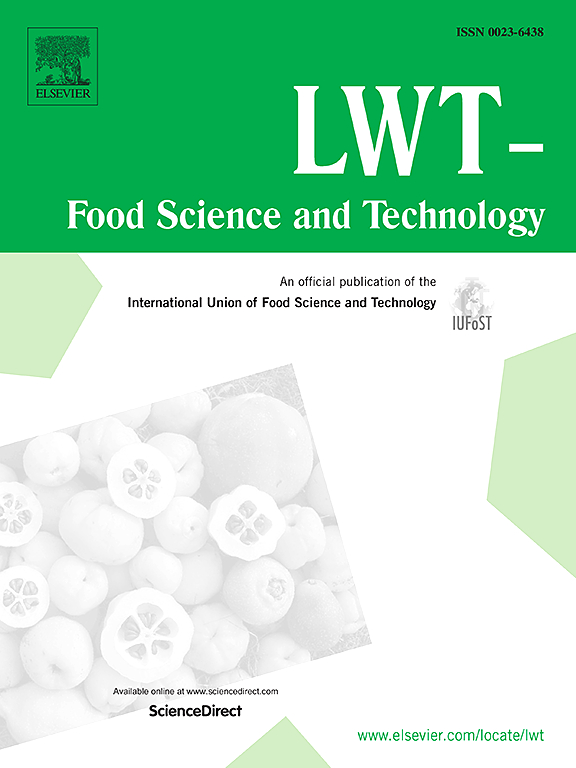The impact of fixed wave application time on the physicochemical and microstructural characteristics of potato slices during intermittent infrared–hot air drying
IF 6
1区 农林科学
Q1 FOOD SCIENCE & TECHNOLOGY
引用次数: 0
Abstract
Intermittent infrared–hot air (IR–HA) drying has emerged as an advanced method to enhance drying efficiency. This study investigated the impact of pulse ratio (PR) with constant wave application time on drying potato slices using this hybrid technique. Process variables included IR power (0 W (HA only), 300 W, 600 W, 900 W) and PR (1 (continuous), 2, 3, 4), assessing their impact on the physicochemical and microstructural characteristics. Results revealed that drying time reduced significantly with increased IR power (300–900 W) and decreased PR (4–1). Deff rose with higher power and continuous mode due to enhanced internal vapor pressure. Compared to HA drying, the hybrid method yielded lower shrinkage, bulk density, and energy consumption. Potatoes dried at 900 W and PR 4 presented minimal shrinkage, maximal rehydration, and preserved microstructure, while the highest energy efficiency occurred at 900 W and PR 1. These results suggest that adjusting IR power and PR can balance energy efficiency and product quality, offering an adaptable framework for industrial drying operations. Intermittent IR–HA drying yields structurally and functionally superior dried products, supporting its use in energy-conscious food processing. This study also presents a streamlined alternative to complex variable-pulsing systems, ensuring industrial applicability without compromising precision.
间歇红外热风干燥过程中固定波施加时间对马铃薯片理化和微观结构特性的影响
间歇红外热空气(IR-HA)干燥是一种提高干燥效率的先进方法。研究了脉冲比(PR)和恒波时间对马铃薯片干燥效果的影响。过程变量包括IR功率(0 W(仅HA), 300 W, 600 W, 900 W)和PR(1(连续),2,3,4),评估它们对物理化学和微观结构特征的影响。结果表明,随着IR功率(300 ~ 900 W)的增加和PR(4 ~ 1)的降低,干燥时间显著缩短。由于内部蒸汽压的增强,Deff在更高的功率和连续模式下上升。与HA干燥相比,混合方法产生更低的收缩率、堆积密度和能耗。在900 W和PR 4下干燥的马铃薯收缩最小,再水化最大,并保留了微观结构,而在900 W和PR 1下能量效率最高。这些结果表明,调节红外功率和PR可以平衡能源效率和产品质量,为工业干燥操作提供适应性框架。间歇式IR-HA干燥产生结构和功能优越的干燥产品,支持其在节能食品加工中的使用。本研究还提出了复杂可变脉冲系统的流线型替代方案,确保工业适用性而不影响精度。
本文章由计算机程序翻译,如有差异,请以英文原文为准。
求助全文
约1分钟内获得全文
求助全文
来源期刊

LWT - Food Science and Technology
工程技术-食品科技
CiteScore
11.80
自引率
6.70%
发文量
1724
审稿时长
65 days
期刊介绍:
LWT - Food Science and Technology is an international journal that publishes innovative papers in the fields of food chemistry, biochemistry, microbiology, technology and nutrition. The work described should be innovative either in the approach or in the methods used. The significance of the results either for the science community or for the food industry must also be specified. Contributions written in English are welcomed in the form of review articles, short reviews, research papers, and research notes. Papers featuring animal trials and cell cultures are outside the scope of the journal and will not be considered for publication.
 求助内容:
求助内容: 应助结果提醒方式:
应助结果提醒方式:


